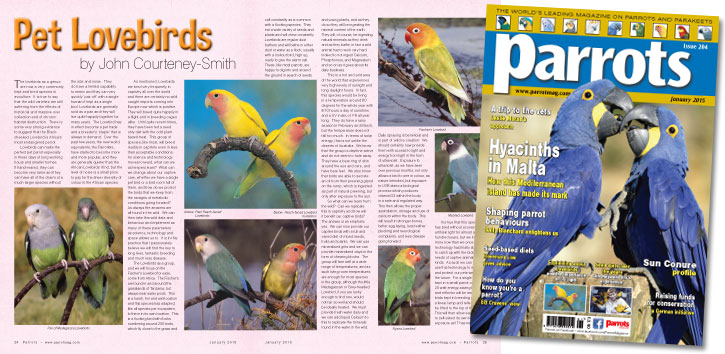
By John Courteney-Smith
The lovebirds as a genus are now a very commonly kept and bred species in aviculture. It is true to say that the wild varieties are still suffering from the effects of historical and massive over collection and of chronic habitat destruction. There is some very strong evidence to suggest that the Black-cheeked Lovebird is Africa’s most endangered parrot.
Lovebirds can make the perfect pet parrot especially in these days of long working hours and smaller homes. If hand-reared, they can become very tame and they can have all of the charm of a much larger species without the size and noise. They do have a limited capability to mimic and they can very quickly ‘pair off’ with a single human if kept as a single bird. Lovebirds are generally sold as a pair and they will live quite happily together for many years. The Lovebird has in effect become a pet trade and a breeder’s ‘staple’ that is always in demand. Over the past few years, the new world equivalents, the Parrotlets, have started to become more and more popular, and they are generally quieter than the African Lovebirds I find, but the level of noise is a small price to pay for the sheer diversity of colour in the African species.
